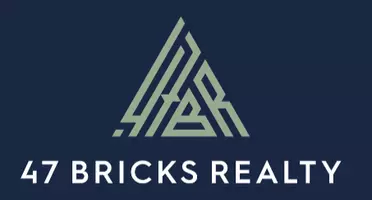
How Mortgages REALLY Work
When it comes to buying a home, most people require financing in the form of a mortgage. A mortgage is a type of loan that allows a person to purchase a property by borrowing money from a lender. Mortgages can be quite complex, so it is essential to understand how they work and the various parties involved. Mortgages are typically repaid over a period of 15 to 30 years, with the borrower making monthly payments that include both principal and interest. The principal is the amount borrowed, while the interest is the cost of borrowing the money. The interest rate on a mortgage can be fixed or adjustable, and it determines the amount of the borrower's monthly payment. One of the key players in the mortgage market are Fannie Mae and Freddie Mac. These are two government-sponsored enterprises (GSEs) that were created to increase the availability of mortgage credit in the US. Fannie Mae and Freddie Mac purchase mortgages from lenders, allowing lenders to free up capital and provide more financing to borrowers. The primary role of Fannie Mae and Freddie Mac is to provide liquidity to the mortgage market, which helps to keep mortgage rates low and make home ownership more accessible for Americans. In addition, they help to standardize the mortgage process by establishing underwriting standards and offering mortgage-backed securities (MBS) to investors. Mortgages are often sold on the secondary market, which is where Fannie Mae and Freddie Mac come in. The secondary market is a financial market where mortgages and other loans are bought and sold. Investors in the secondary market can include banks, hedge funds, and other financial institutions. Mortgages are packaged together into pools, which are then sold to investors as MBSs. An MBS is a security that represents a share in a pool of mortgages, and it allows investors to buy into the mortgage market without actually owning the individual mortgages. The interest and principal payments from the mortgages in the pool are passed through to the MBS investors. The secondary market provides liquidity to the mortgage market, which helps to keep interest rates low and ensure that lenders have access to capital to continue making loans. Fannie Mae and Freddie Mac are important players in the secondary market, as they purchase and securitize a large portion of the mortgages in the US. In summary, mortgages are an essential part of the home buying process, and Fannie Mae and Freddie Mac play a critical role in the mortgage market. By providing liquidity and standardizing the mortgage process, they help to ensure that Americans have access to affordable home financing. The secondary market also plays a critical role in providing liquidity and allowing investors to participate in the mortgage market. Overall, understanding the various players and mechanisms involved in the mortgage market can help borrowers make informed decisions about financing their homes.

Pros and Cons of Buying a Condo: Is It the Right Choice for You?
Condominiums, or condos, are popular housing options that offer a range of benefits to their owners. However, like any other housing option, condos have their advantages and disadvantages. In this blog post, we will explore the pros and cons of buying a condo. Pros: Affordability: Condos are usually more affordable than single-family homes. This is because the cost of the land and the building is shared among multiple owners, making the price of each unit lower than that of a single-family home. Low Maintenance: Condo living often means lower maintenance responsibilities. This is because the condo association takes care of the building's common areas, including hallways, elevators, and landscaping. This can save you both time and money. Amenities: Condos often come with a range of amenities, such as gyms, swimming pools, and community rooms. These amenities can add to your quality of life and save you money on memberships or fees to use similar facilities elsewhere. Security: Condos often have security measures in place, such as gated entrances and surveillance cameras. This can provide peace of mind for owners, especially those who travel frequently or live alone. Location: Condos are often located in urban or suburban areas, making them convenient to shopping, dining, and entertainment options. Cons: Fees: Condos often come with monthly fees, known as homeowners association (HOA) fees. These fees can be significant and are used to cover the cost of common area maintenance and repairs. It's important to factor in these fees when considering the affordability of a condo. Rules and Regulations: Condo associations often have rules and regulations that owners must abide by. These can include restrictions on pets, noise, and even the color you can paint your front door. While these rules are often put in place to maintain a harmonious living environment, they can be restrictive. Lack of Privacy: Condo living often means sharing walls with neighbors, which can lead to noise and privacy issues. Additionally, you may have less outdoor space or no outdoor space at all. Limited Control: Condo owners often have limited control over the building's management and maintenance. This can be frustrating if you have specific ideas about how you want to maintain or improve your unit or the building. Resale Value: Condos may not appreciate in value as quickly or as significantly as single-family homes. This can make it difficult to recoup your investment if you decide to sell in the future. In conclusion, buying a condo has both pros and cons. It's important to consider your lifestyle, budget, and long-term goals when deciding whether a condo is the right choice for you. If you value low maintenance living, amenities, and security, and are comfortable with the rules and regulations that come with condo living, then a condo may be a great option. However, if you prioritize privacy, control over your living environment, or potential appreciation in value, then a single-family home may be a better choice.

Top 10 Real Estate Marketing Ideas for 2023: Staying Ahead of the Competition.
The real estate industry is constantly evolving, and keeping up with the latest marketing trends is essential for success. With the rise of technology and changing consumer preferences, real estate agents and brokers must be proactive in implementing effective marketing strategies. Here are the top 10 real estate marketing ideas for 2023 that will help you stay ahead of the competition. \ Virtual Reality Tours: Virtual reality technology is becoming increasingly popular in the real estate industry. By offering virtual reality tours, you can provide potential buyers with an immersive experience of the property from the comfort of their own homes. This technology is especially useful for out-of-town buyers who may not be able to visit the property in person. Social Media Advertising: Social media advertising has been a popular marketing tool for a while now, but it will continue to be an essential component of any real estate marketing strategy in 2023. Facebook and Instagram are the top platforms for real estate advertising, allowing you to target specific demographics and promote your listings to a wider audience. Influencer Marketing: Influencer marketing is a new trend in the real estate industry, and it's an effective way to reach a wider audience. Collaborating with local influencers who have a strong following on social media can help you promote your listings to a broader audience and increase brand awareness. Live Video Tours: Live video tours are becoming increasingly popular, especially for properties that are difficult to showcase through photos alone. By using live video, you can give potential buyers a more detailed look at the property and answer any questions they may have in real-time. 3d Renderings: 3D renderings are a great way to showcase the potential of a property. They can be used to show buyers what a property could look like after renovations or to highlight the property's unique features. Chatbots: Chatbots are a valuable tool for real estate agents, allowing you to provide immediate responses to inquiries and automate certain aspects of your business. By using a chatbot, you can save time and provide better customer service to potential buyers. Personalized Marketing: Personalized marketing is a growing trend, and it's an effective way to connect with potential buyers on a more personal level. By using data analytics, you can create targeted marketing campaigns that speak directly to the needs and interests of your audience. Video Testimonials: Video testimonials are a powerful marketing tool, allowing satisfied clients to share their positive experiences with your services. By featuring video testimonials on your website and social media channels, you can build trust with potential buyers and increase your credibility. Podcasts: Podcasts are a growing trend, and they can be an effective way to reach a wider audience. By hosting a real estate podcast, you can share your expertise and provide valuable insights to potential buyers. Artificial Intelligence: Artificial intelligence (AI) is transforming the real estate industry, and it's an essential tool for any real estate agent or broker. By using AI, you can automate certain aspects of your business, including lead generation, customer service, and property valuation. The real estate industry is constantly evolving, and keeping up with the latest marketing trends is crucial for success. The year 2023 brings new marketing opportunities for real estate agents and brokers to showcase properties and reach a wider audience. From virtual reality tours to artificial intelligence, there are numerous effective marketing strategies available. These include social media advertising, personalized marketing, influencer marketing, 3D renderings, live video tours, chatbots, video testimonials, podcasts, and more. By implementing these top 10 real estate marketing ideas, agents and brokers can stand out in a crowded marketplace and stay ahead of the competition.

How to Buy Your First Home: A Step-by-Step Guide
Buying your first home can be an exciting but also daunting experience. It is a major financial decision that requires careful consideration and planning. To make the process smoother and less stressful, it is important to follow a step-by-step guide. In this blog post, we will walk you through the process of buying your first home, from figuring out your budget to closing the deal. Step 1: Determine your budget The first step in buying your first home is to figure out how much you can afford. This involves taking a close look at your finances, including your income, expenses, and debts. You can use an online mortgage calculator to get an idea of how much you can borrow and what your monthly payments will be. Keep in mind that you will also need to factor in closing costs, property taxes, and other expenses associated with buying a home. Step 2: Get pre-approved for a mortgage Once you have an idea of your budget, the next step is to get pre-approved for a mortgage. This involves submitting an application to a lender, who will review your finances and credit history to determine how much they are willing to lend you. Getting pre-approved for a mortgage will give you a better idea of what you can afford and will also make you a more attractive buyer to sellers. Step 3: Hire a real estate agent Buying a home can be a complex process, so it’s a good idea to hire a real estate agent who can guide you through the process. A real estate agent can help you find properties that fit your budget and preferences, negotiate with sellers, and handle the paperwork and legal aspects of the transaction. Look for an agent who has experience working with first-time homebuyers and who you feel comfortable working with. Step 4: Search for properties With the help of your real estate agent, you can start searching for properties that fit your budget and preferences. Consider factors like location, size, amenities, and neighborhood when looking for properties. Don’t be afraid to ask questions and take your time when looking at properties – this is a major investment and you want to make sure you find the right home. Step 5: Make an offer Once you have found a property that you like, you can make an offer to the seller. Your real estate agent can help you draft a purchase agreement that outlines the terms of the offer, including the purchase price, contingencies, and closing date. The seller can either accept, reject, or counter your offer, so be prepared to negotiate if necessary. Step 6: Get a home inspection Before closing the deal, it’s important to get a home inspection to ensure that there are no major issues with the property. A home inspector will evaluate the property and provide a report that outlines any problems or potential issues. If there are any major issues, you may be able to negotiate with the seller to either fix them or reduce the purchase price. Step 7: Close the deal Once the inspection is complete and any contingencies have been met, it’s time to close the deal. This involves signing the final paperwork and transferring the ownership of the property to you. You will also need to pay closing costs, which can include fees for the lender, title company, and other services. Buying your first home can be a complex process, but by following these steps and working with a real estate agent, you can make the process smoother and less stressful. Remember to take your time, do your research, and ask questions along the way. Good luck with your homebuying journey!
Categories
- All Blogs (35)
- Appraisal (2)
- Benefits of Agents (8)
- Condo (1)
- First-time Home Buyer (8)
- Home Improvement (1)
- Home Inspection (3)
- Home Maintenance (1)
- Home Trends (9)
- Lending (5)
- Marketing Your Home (6)
- Mortgages (1)
- New Agents (1)
- New Construction (2)
- Pricing (1)
- Recruiting (1)
- Smart Home Technology (1)
- Staging (1)
Recent Posts











